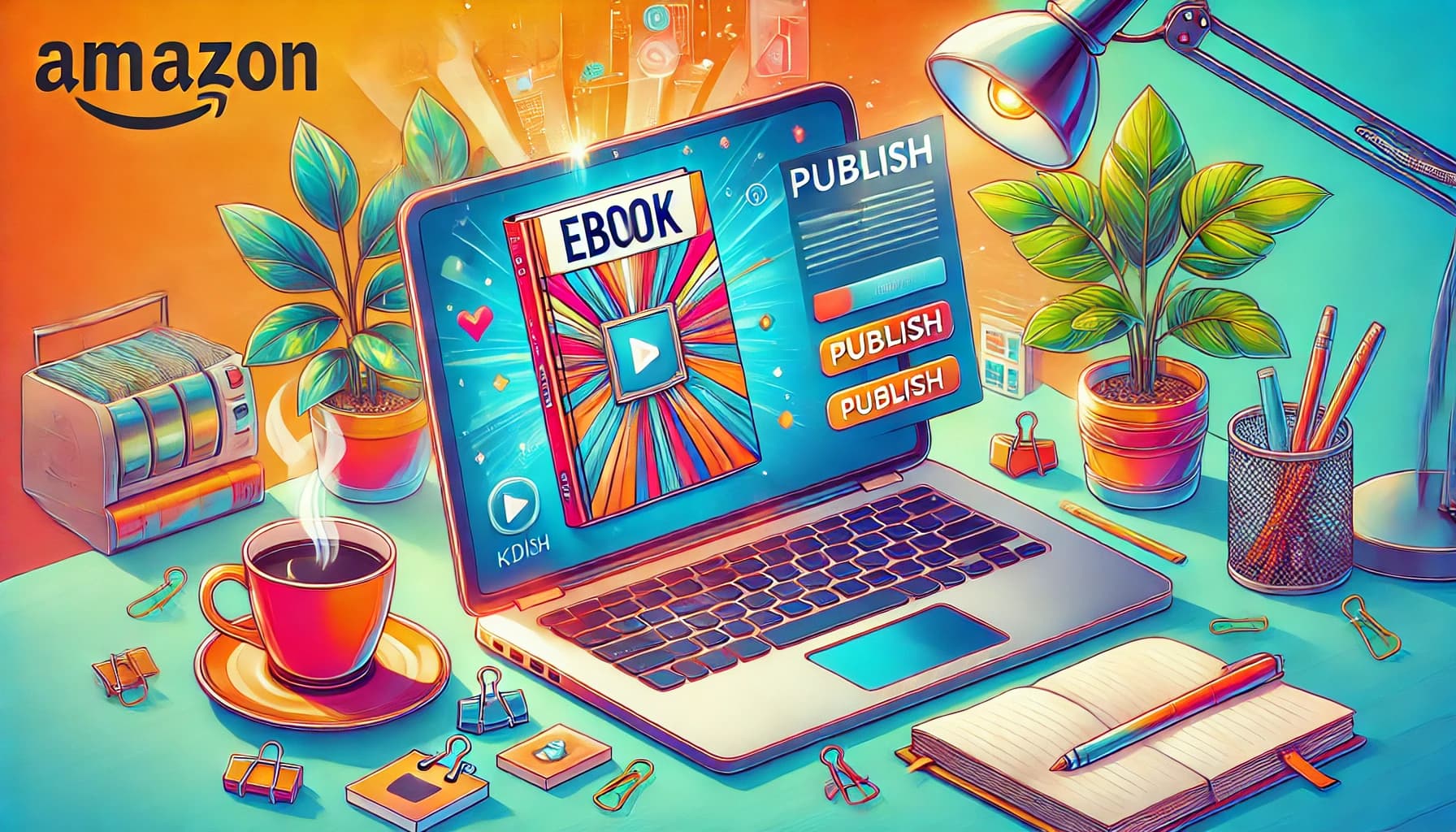Table of Contents
Thinking about creating your own author NFTs? It can seem a bit tricky at first, but don’t worry—there’s a straightforward way to get started. If you keep reading, I’ll show you simple steps to turn your books into digital collectibles, plus tips to make them stand out. So, let’s break down how you can launch your own author NFTs and join this exciting space!
Key Takeaways
Key Takeaways
- Creating author NFTs turns your books and related content into unique digital assets on the blockchain. Pick the right platform, set up a crypto wallet, prepare your files, and mint your NFTs with appealing metadata. Build a community beforehand, offer limited editions, and add exclusive content to make your NFTs stand out. Choose a blockchain that fits your budget and audience, with Ethereum leading but alternatives like Polygon offering lower fees. Add high-quality files, track ownership, and set royalties to earn from secondary sales. Follow these steps to enter the growing NFT space and connect directly with fans.

How to Create Author NFTs
Creating author NFTs might sound complicated, but it’s really about transforming your book or related content into unique digital assets on the blockchain. The key is to understand the process clearly so your NFT can stand out in the bustling NFT market, which is projected to hit over $60 billion by 2025.
Step 1: Choose the Right NFT Marketplace for Authors
Start by picking an NFT platform that suits authors, especially those that support multimedia content and offer author-friendly features. Popular options include OpenSea, Rarible, and Mintable, but make sure to select a marketplace that has low transaction fees, easy user interfaces, and a good reputation.
Step 2: Set Up a Crypto Wallet
Your wallet is your digital bank account for NFTs. Create a secure crypto wallet compatible with your chosen marketplace, like MetaMask or Coinbase Wallet. Ensure it supports Ethereum or other blockchains suitable for NFTs, as this is where your token will live.
Step 3: Add Funds to Your Wallet
Buy some cryptocurrency, preferably ETH for most platforms, to cover minting and transaction fees. You can purchase ETH via exchanges like Coinbase or Binance. Having enough funds ensures you don't get stuck during the minting process — think of it as paying for your first ticket into the NFT concert.
Step 4: Prepare Your Book Files and Metadata
Gather high-quality versions of your ebook, cover images, or related content. Write compelling metadata: title, description, and tags. Remember, your NFT isn’t just the file — it’s the story behind it that appeals to collectors. Adding exclusive content, like author notes or bonus chapters, can make your NFT more attractive.
Step 5: Mint and List Your NFT Book
Use the platform’s minting feature to convert your files into a token. Fill in the metadata, set your royalty percentage (the share you get from secondary sales), and then list your NFT for sale or auction. Be clear about what makes your NFT special—whether it’s limited editions, added content, or a unique digital signature.
Additional Tips for Successful Author NFTs
Build a Community Before Launching
Engage with your audience via social media, newsletters, or online groups. Creating anticipation helps ensure a bounce when your NFT drops, increasing its chances of catching the eye of collectors.
Create Limited Editions to Increase Value
Limited runs excite buyers because scarcity boosts desirability. Offering only a handful of NFT copies of your book or special versions can make them more valuable over time.
Add Exclusive Content to Make Your NFT Stand Out
Think beyond just the digital file. Include behind-the-scenes stories, author insights, or bonus artwork. Exclusive material creates a sense of privilege and encourages fans to invest in your unique offerings.
Offer Unique Versions of Your NFTs
Consider creating different tiers—standard, rare, and ultra-rare editions. These exclusives can command higher prices and motivate collectors to purchase multiple versions of your work.
Select the Right Blockchain and Platform
Ethereum currently dominates the NFT scene with over 62% of contracts, but alternatives like Polygon or Solana offer lower fees. Choosing the right platform and blockchain depends on your budget and target audience.
Choose Supported File Types and Formats
Check platform requirements; most support JPG, PNG, MP4, MP3, or PDF files. For books, PDFs work well, but consider creating multimedia NFTs with audio or video content for more impact.
Ensure High-Quality Files and Proper Storage
Upload clear, high-resolution files to avoid poor presentation. Store your original files securely outside of the blockchain, using reputable services like IPFS, to guarantee longevity and accessibility.
Understand the Benefits of Using Blockchain for Authors
Using blockchain means your work’s ownership is transparent and tamper-proof. You can prove Copyright, prevent unauthorized copies, and directly connect with your fans without intermediaries.
Track Ownership and Protect Your Copyrights
Blockchain automatically records every transfer, making it easy to see who owns your NFTs. This transparency helps you defend against copyright infringements effectively.
Set Up Royalties for Resale Income
One of the best parts of creating NFTs is earning royalties—say, 10–20%—each time your NFT is sold in the secondary market. This creates passive income, especially if your work gains popularity.
By following these steps and tips, you're well on your way to turning your authorship into a thriving digital collectible business on the blockchain. To go deeper into settling on the right platform or improving your NFTs, (https://automateed.com/best-website-builder-for-authors/) can give you a leg up. Creating an engaging NFT isn’t just about technical steps; it’s about storytelling—so make your digital assets true reflections of your literary personality.

How Blockchain Dominance Shapes the Market for Authors
Ethereum's hold on the NFT space gives creators a lot of advantages, like proven security and wide adoption.
With over 62% of NFT contracts running on Ethereum, it’s the go-to blockchain for many authors looking to mint digital collectibles.
The recent EIP-4844 upgrade has cut transaction fees by more than 90%, making it easier and cheaper for creators to publish and sell their work.
While Ethereum dominates, platforms on Polygon or Solana offer lower costs, so consider your budget and audience when choosing a blockchain.
Remember, the choice of blockchain impacts your exposure, fees, and the type of collectors your NFTs will attract.
Understanding Supported File Types and Formats for Author NFTs
Most NFT platforms support common formats like JPG, PNG, MP4, MP3, and PDF, so you can choose how you want to present your work.
For authors, PDFs are popular for ebooks, but multimedia NFTs with videos or audio files can add a special touch, making your collection more engaging.
Always double-check platform-specific requirements for file sizes and formats to avoid emoji-sized surprises during upload.
Consider creating high-quality, clear images and files to make your NFTs look professional and attractive to buyers.
Ensuring High-Quality Files and Proper Storage Solutions
Uploading high-resolution versions of your work ensures your digital assets look great across devices.
Storing your original files securely outside the blockchain, such as on IPFS, safeguards your content against link rot or platform issues.
This means even if the platform goes down, your original work remains accessible and permanently linked to your NFT.
Keep backups of your files in multiple locations to avoid losing your valuable creations.
Understanding the Benefits of Using Blockchain to Protect Your Work
Blockchain's transparent ledger makes proving ownership and copyright much easier than traditional methods.
Each NFT transfer is recorded forever, so you can see who owns your work at any given time.
This record helps in fighting infringement and unauthorized copying, giving you peace of mind.
Plus, blockchain connects you directly to your fans, removing middlemen and allowing you to control your creative rights more tightly.
Tracking Ownership and Managing Copyrights Effectively
Every transaction on the blockchain is a public record, making it straightforward to verify who owns your NFTs now.
This transparency can serve as evidence in copyright disputes or legal matters.
Make sure to include clear licensing terms in your metadata to prevent misuse or confusion.
Regularly monitor your NFTs' sales and transfers to catch any unauthorized activity early.
Setting Up Royalties for Resale Income
Most NFT platforms let you specify royalty percentages—typically between 10% and 20%—that you earn every time your NFT resells.
This setup offers a passive stream of income, especially if your work gains popularity.
Think strategically about your royalty rate: higher percentages increase your earnings but might deter some buyers.
Design your NFTs with resale in mind; unique, desirable editions often fetch higher secondary sales, boosting your royalty income.
Engaging Your Audience with Community Features
Building a community around your work is crucial—share updates on social media, participate in forums, and involve fans early.
The more engaged your audience, the more likely they’ll support your NFT drops and spread the word.
Use platforms that support community tools, like Discord or Telegram, to foster direct conversations with collectors.
Creating buzz before your launch can significantly increase initial sales and raise awareness about your author brand.
Incorporating Data and Market Trends into Your NFT Strategy
The NFT market is booming, with a projected worth of over $60 billion by 2025, so staying updated on trends is key.
For example, gaming NFTs, which make up around 38% of transaction volume, show that interactive and entertainment-focused content resonates well with collectors.
Knowing that Ethereum leads with over 62% of the market, but that cheaper blockchains like Polygon are catching up, can help you choose the best platform.
Track trading volumes and user demographics—such as the fact that Asia has 2.8 million NFT owners—to target your marketing efforts effectively.
Using Data to Optimize Your NFT Listings and Sales
Analyzing marketplace data can show you which types of NFTs sell best for authors—like limited editions or multimedia assets.
Utilize tools like Amazon KDP niche research for trends or platforms’ native analytics to improve your listing strategies.
Adjust your pricing, metadata, and promotion based on what collectors are currently seeking.
A well-informed approach helps you stand out and maximizes your sales potential.
FAQs
Look for platforms that support authors, offer easy minting processes, and have a strong user base. Check if they support your preferred file types and provide features like community building and royalty management.
Ensure your files are high-quality, in supported formats, and include accurate metadata. Organize your content and consider creating special editions or exclusive material to add value.
Use blockchain's transparent ledger to establish ownership proof. Set clear licensing terms and include copyright information in your NFT metadata to safeguard your work.
Build an audience ahead of launch, leverage social media, create limited editions, and offer exclusive content. Engage with your community to boost interest and sales for your NFTs.



